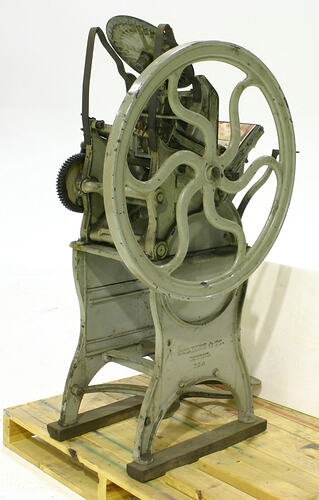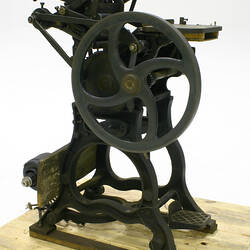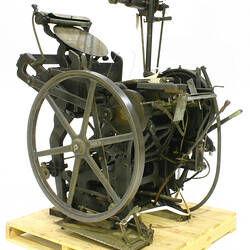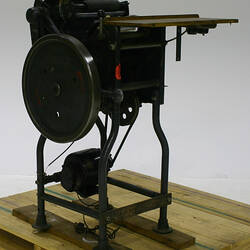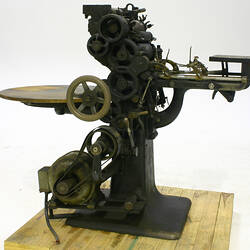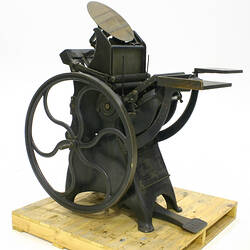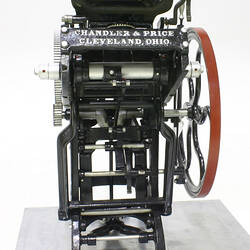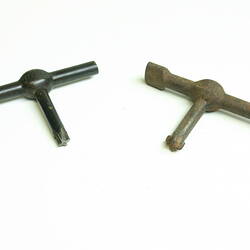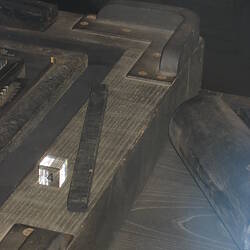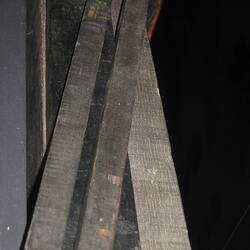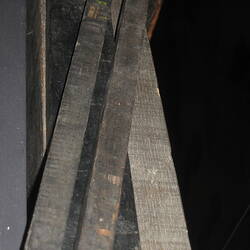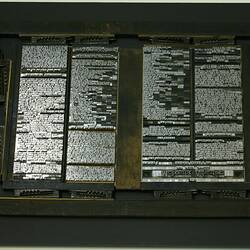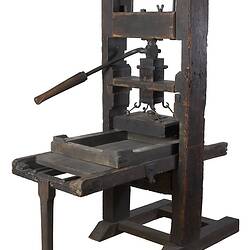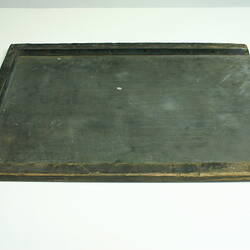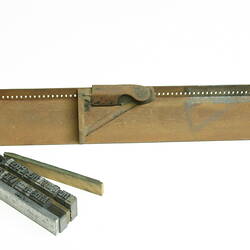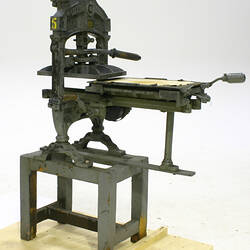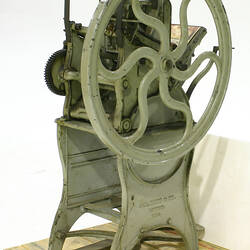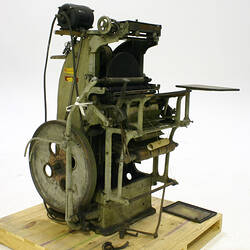Terms used in this document
Letterpress - description of typographic elements printed from a raised surface
Letterpress printing - the art of printing from a raised surface such as type or blocks
Type - pieces of metal cast with an image in relief on the upper surface
Block - a wood or metal base on which a metal printing plate is mounted
Chase - the metal forme, or cast or wrought iron, in which type or block matter is set up for printing
Forme - the configuration of type and/or illustrative matter set up in a chase
Letterpresss printing
Letterpress printing is the art of printing from a raised surface such as type or blocks. Types are pieces of metal individually cast with an alphabetical character in relief. These characters are hand picked from a case, set in a small hand-held tray called a composing stick to form a line of words. The composing stick can be adjusted to any length of line. A number of lines are set in the composing stick and then transferred to a metal frame, called a chase.
The lines of type, and the sentences and paragraphs they make, are spaced with thin metal, called leads, or thin wooden pieces known as reglets. All spacing is called furniture and it comes in different sizes to fill different spaces. Within the chase the type matter is braced on all sides with metal or wooden furniture, and is locked into the chase with quoins. Old quoins were wooden wedges hammered into place with a wooden mallet. Modern quoins are slim expandable metal locks, turned with a key to tighten the type matter against the sides of the chase. Arranging and locking up of the type or illustrative matter in a chase is called imposing. A block is an illustration or drawing that has been engraved on a thin metal plate and mounted on a wood or metal base to match the height of type.
A block can also be an engraving directly on a wood block. Wood type letters are also wooden blocks with an engraved character.
A configuration of lines or pages of type and/or illustrative matter imposed and locked up in a chase and ready for printing is called a forme. When a forme has been locked into its chase it is ready for printing. The chase is placed on the bed of the printing press and the forme is inked, by hand or mechanical means. A sheet of paper is fed into the press and a platen or cylinder impresses the inked forme onto the paper. The paper is removed and the process repeated.
More Information
-
Keywords
-
Authors
-
Article types
